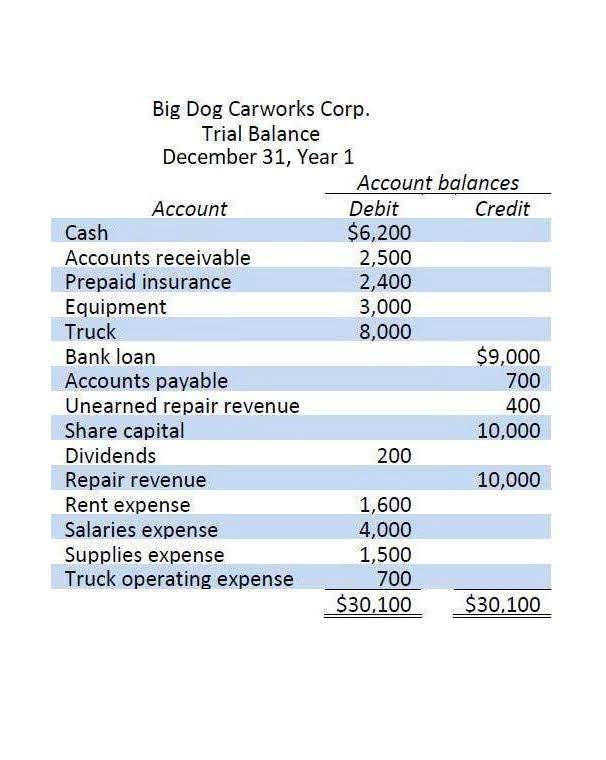Bookkeeping
How to Calculate the Net Working Capital on Cash Flow

It has accounts receivable worth $250,000, inventory worth $300,000, and accounts payable worth $350,000. Net Working Capital (NWC) represents the difference between a company’s current assets and current liabilities. It reflects the firm’s ability to meet its short-term obligations and maintain smooth day-to-day operations. The NWC ratio, expressed as a percentage, provides valuable insights into the company’s liquidity position. Working capital measures the funds available for day-to-day business operations.

What about current liabilities?
- This makes it easier to get loans, if needed, because lenders see it as a sign of good financial health.
- Most major new projects, like expanding production or entering into new markets, often require an upfront investment, reducing immediate cash flow.
- Therefore, the impact on the company’s free cash flow (FCF) is +$2 million across both periods.
- The working capital formula tells us the short-term liquid assets available after short-term liabilities have been paid off.
- Net Working Capital serves as a critical measure of a company’s liquidity, reflecting its ability to meet short-term obligations.
A company that keeps track of the working capital will have a smooth run. Companies with large working capital can finance big projects for expansion. If the company wants to calculate its net working capital ratio, here is how it will do it. Attendance tracking in Excel helps net sales record work hours, absences, and schedules.

Accept multiple payment methods
First, we need to separate the current assets from the current liabilities. Different companies may have different level https://www.bookstime.com/ of liquidity requirements, depending on the type of industry, business model, products and services manufactured etc. It also depends on the market conditions and the size of company operations.
Working capital formula

For many firms, the analysis and management of the change in working capital formula operating cycle is the key to healthy operations. The quick ratio—or “acid test ratio”—is a closely related metric that isolates only the most liquid assets, such as cash and receivables, to gauge liquidity risk. The working capital metric is relied upon by practitioners to serve as a critical indicator of liquidity risk and operational efficiency of a particular business. As for accounts payables (A/P), delayed payments to suppliers and vendors likely caused the increase.
The NWC ratio, also known as the current ratio, measures the percentage of a company’s current assets to its short-term liabilities. Similar to NWC, the NWC ratio can be used to determine whether you have enough current assets to cover your current liabilities. Look at the company’s balance sheet and relevant financial statements to ensure nothing like short-term obligations or accrued expenses are missed. Net working capital, or working capital, is a financial metric that gives businesses a quick snapshot of their current assets versus current liabilities. By calculating net working capital, companies can understand how much is in the tank to cover any short-term costs.

Current Assets
This strategy requires close coordination with suppliers to ensure timely deliveries. Additionally, leveraging technology such as inventory management software can provide real-time insights and streamline operations. Working capital is calculated from the current assets (assets the company can sell or spend easily within one year) minus any upcoming debt payments due over the next year. Simply put, a business’s liabilities are its financial obligations, or money it’s agreed to pay others.
Example calculation with the working capital formula
Even if a company has a lot invested in fixed assets, it will face financial and operating challenges if liabilities are due. This may lead to more borrowing, late payments to creditors and suppliers, and, as a result, a lower corporate credit rating for the company. The cash flow from operating activities section aims to identify the cash impact of all assets and liabilities tied to operations, not solely current assets and liabilities. The balance sheet organizes assets and liabilities in order of liquidity (i.e. current vs long-term), making it easy to identify and calculate working capital (current assets less current liabilities). The current ratio is calculated by dividing a company’s current assets by its current liabilities. In financial accounting, working capital is a specific subset of balance sheet items and is calculated by subtracting current liabilities from current assets.
It is what tells you if your company has enough current assets to pay out its current liabilities that are due within a year. The essence of the concept is that if a company has a positive working capital, it means they have funds in surplus. The inverse of having a negative working capital indicates that the company owes more than it has in its cash flow. We delved into NWC’s key roles, discovering that it’s not just a number on a balance sheet. It predicts future cash flow, unveils the true value of a company, and acts as a financial compass. Consequently, it helps keep the ship sailing smoothly in the unpredictable sea of business.
- This guide covers what working capital is, how to calculate it, and tips to manage it effectively for better financial outcomes.
- It means that it can generate revenue without increasing current liabilities.
- Managing payables effectively involves negotiating favorable payment terms to extend due dates without incurring penalties.
- Companies with large working capital can finance big projects for expansion.
- It demonstrates the number of short-term business assets that are available for a business to pay its short-term obligations.
Use of Net Working Capital Formula
By calculating the change in net working capital in this way, we can now take a closer look at the numbers to understand why net working capital either increased or, in this case, decreased over time. Founded in 1993, The Motley Fool is a financial services company dedicated to making the world smarter, happier, and richer. The following information has been taken from the balance sheet of ABC Company. If you’d like more detail on how to calculate working capital in a financial model, please see our additional resources below.
